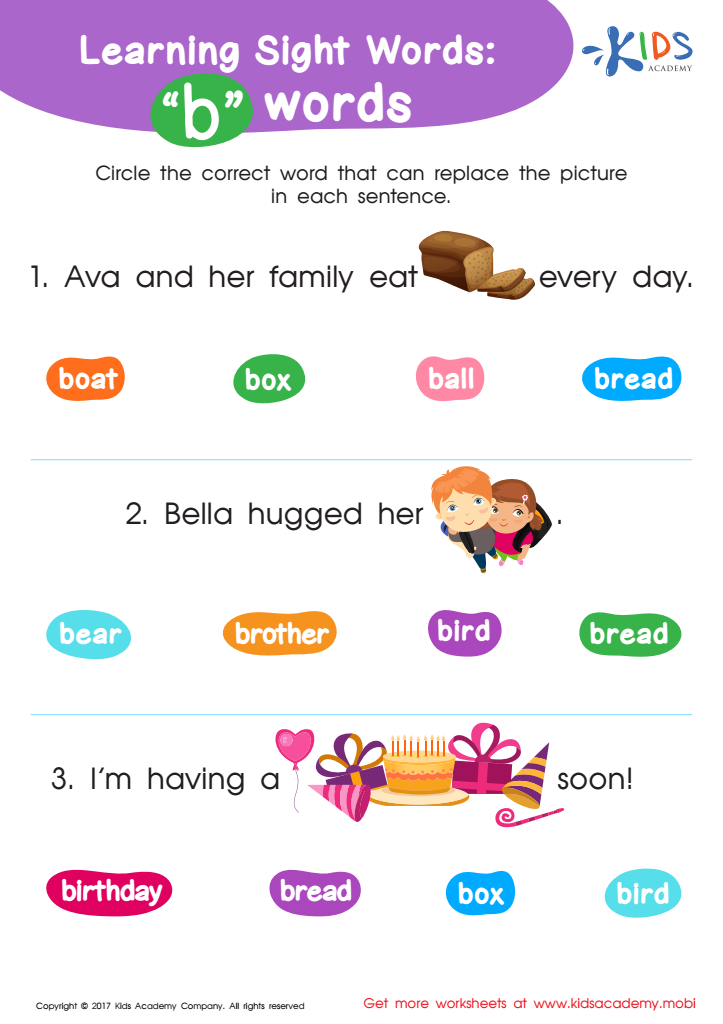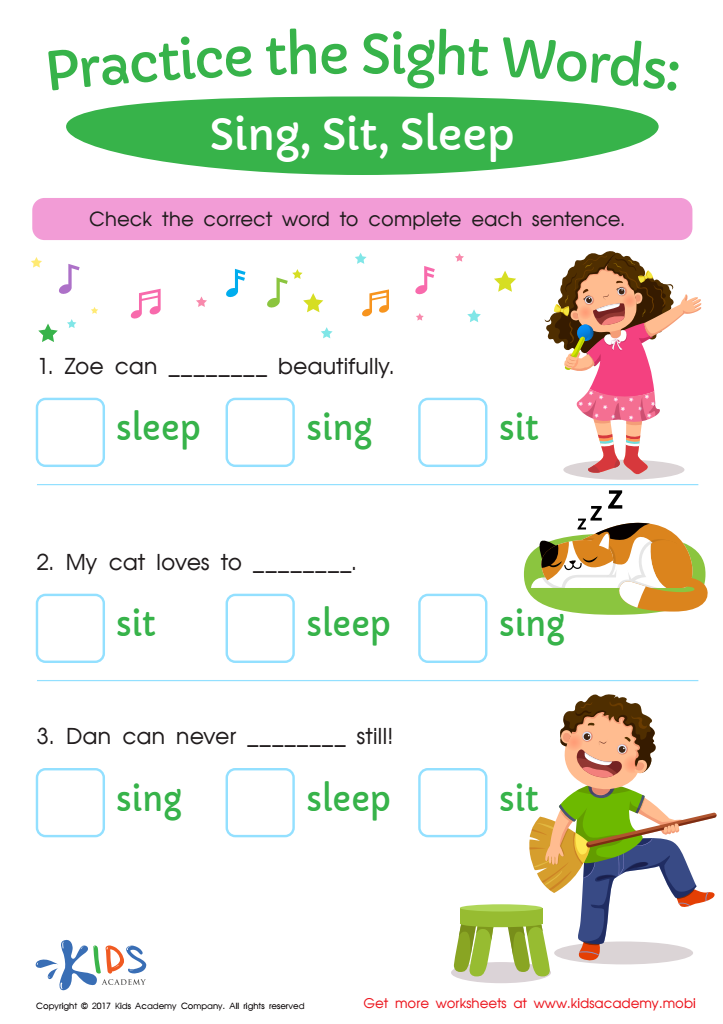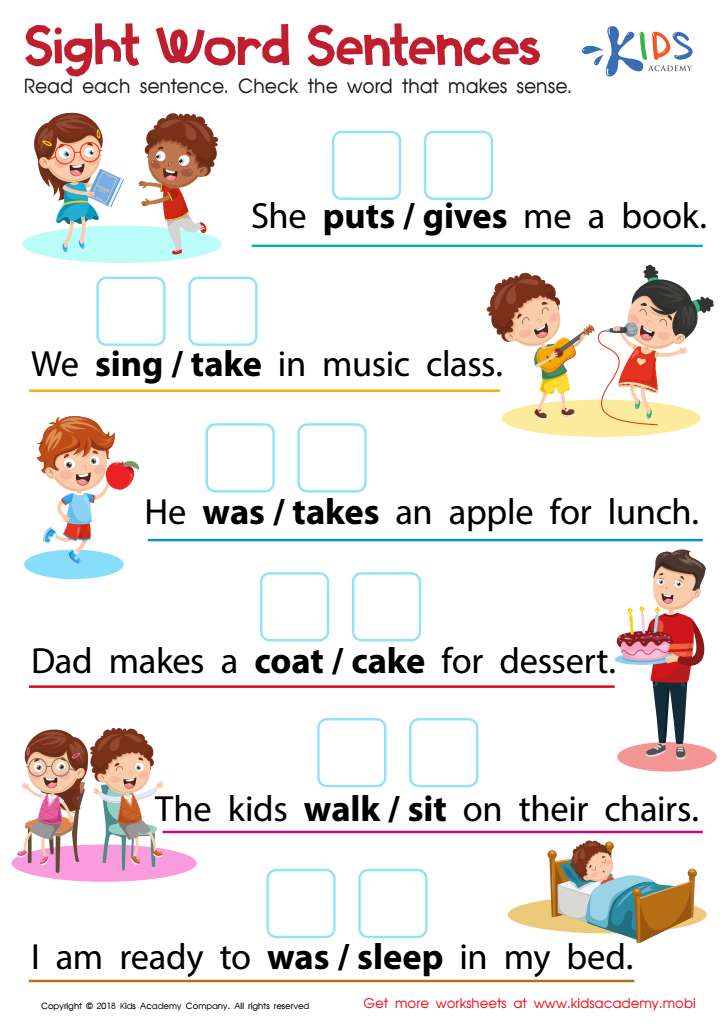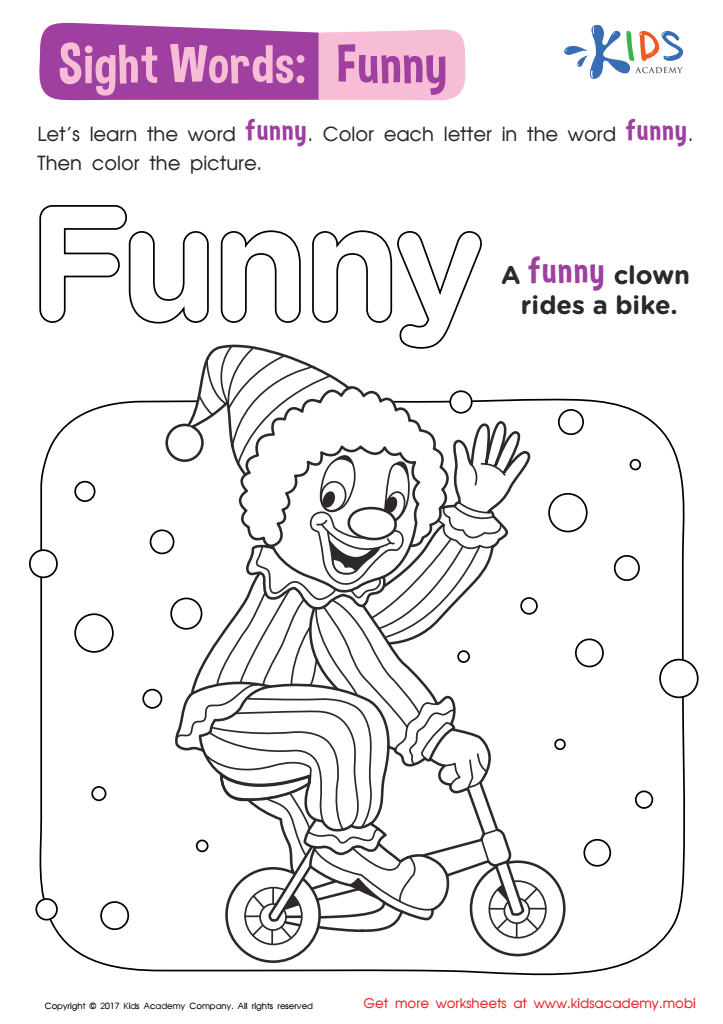Sight words recognition Worksheets for Ages 6-7
4 filtered results
-
From - To
Boost your child's reading fluency with our engaging Sight Words Recognition Worksheets for Ages 6-7. Designed to develop essential literacy skills, these worksheets incorporate fun activities and visually appealing graphics to make learning sight words enjoyable and effective. Each worksheet focuses on commonly used words that young readers should recognize instantly, helping to build a strong foundation for reading and writing. Perfect for both classroom and at-home learning, our resources provide an interactive way for first graders to practice and master key sight words, ensuring they progress confidently on their literacy journey.


Sight Words Free Worksheet – B Words


Sing, Sit, Sleep Sight Words Worksheet


Sight Words Sentences Worksheet


Funny Worksheet Sight Words Worksheet
Sight words recognition is crucial for children ages 6-7 as it lays the foundation for fluent reading and overall academic success. Sight words are commonly used words that young readers must recognize instantly to maintain reading fluency. For students in early grades, mastery of these words supports smoother reading experiences because sight words often do not follow regular phonetic patterns and need to be memorized rather than decoded.
When children can instantly recognize sight words, they devote less cognitive effort to decoding and more to comprehension, enabling them to grasp the meaning of texts more effectively. This proficiency also boosts their confidence and encourages a positive attitude toward reading.
Additionally, a robust sight word vocabulary supports classroom learning, where students are frequently exposed to these words across subjects, enhancing their overall academic performance. Teachers and parents play an essential role in reinforcing these words through tools like flashcards, reading practice, and interactive activities.
Ignoring sight words could result in reading difficulties that hinder a child's ability to keep pace with curricular demands, potentially affecting long-term educational outcomes. Thus, early and consistent sight word recognition practice is indispensable in children’s literacy development, making it a responsibility that both parents and teachers should prioritize.

 Assign to My Students
Assign to My Students





















